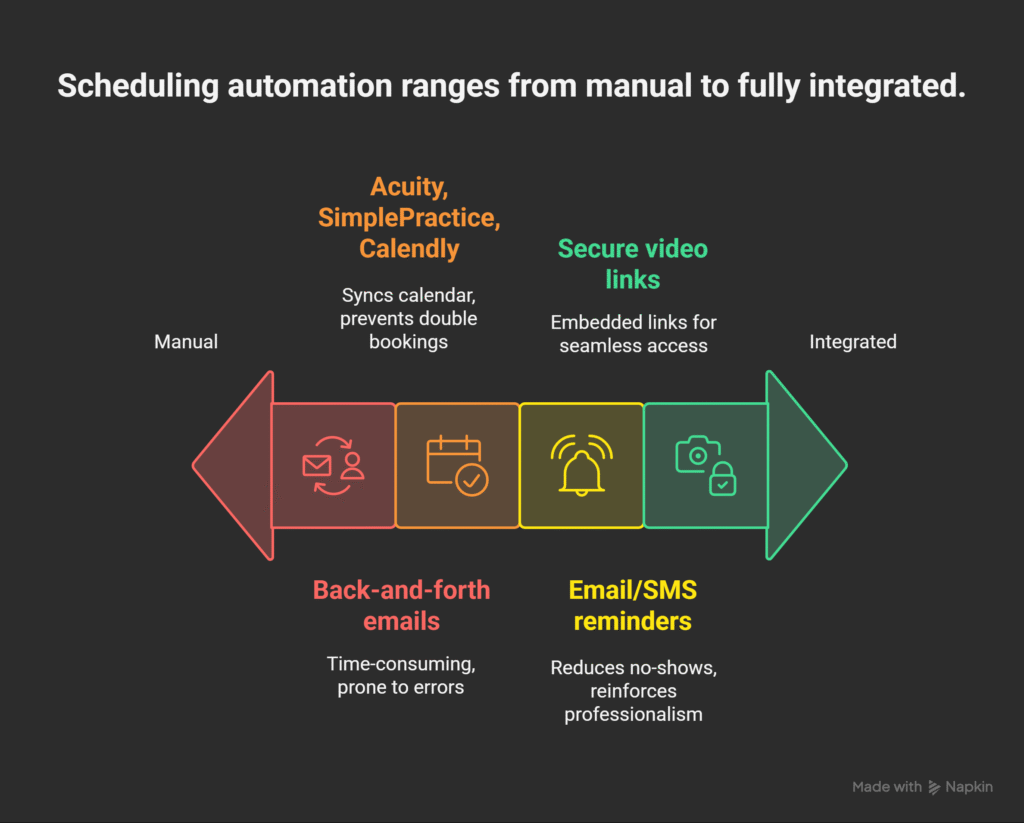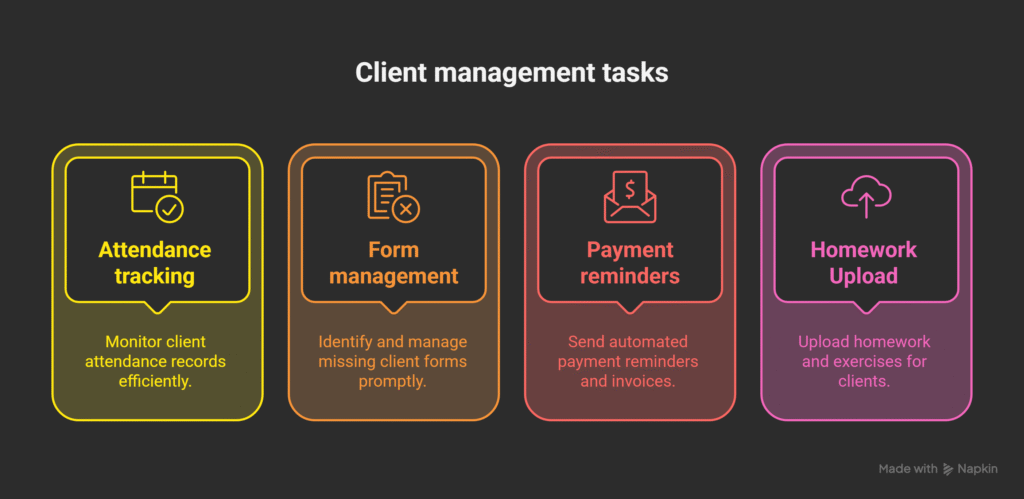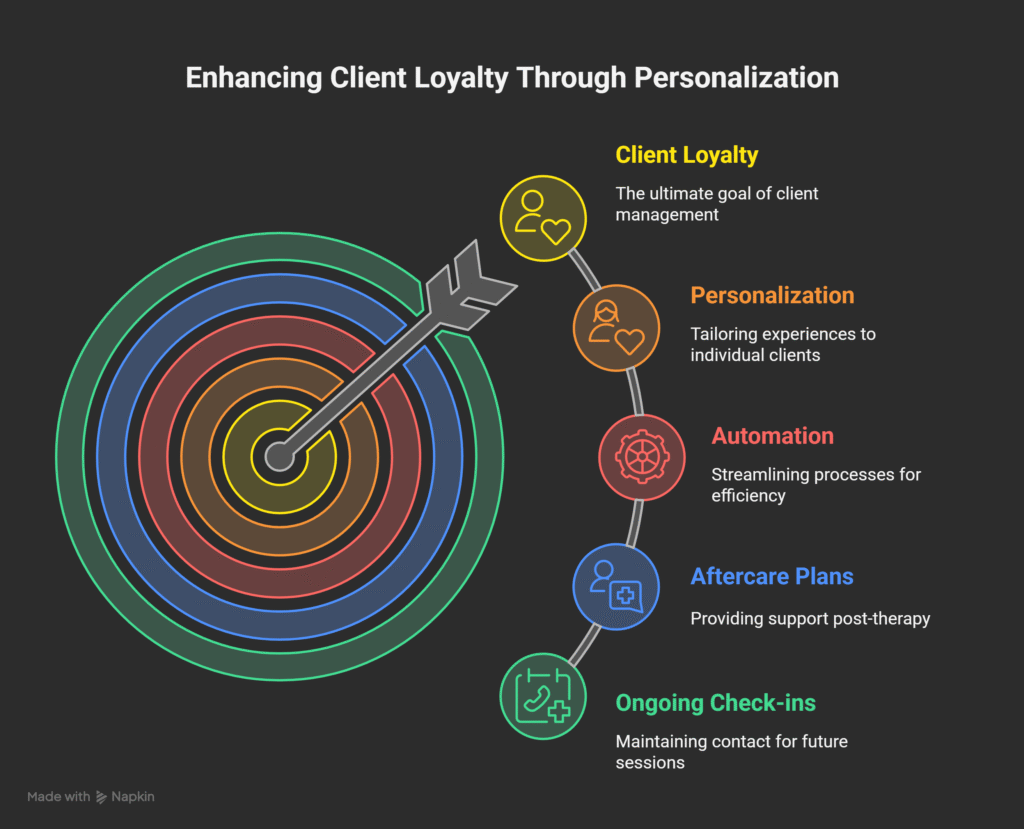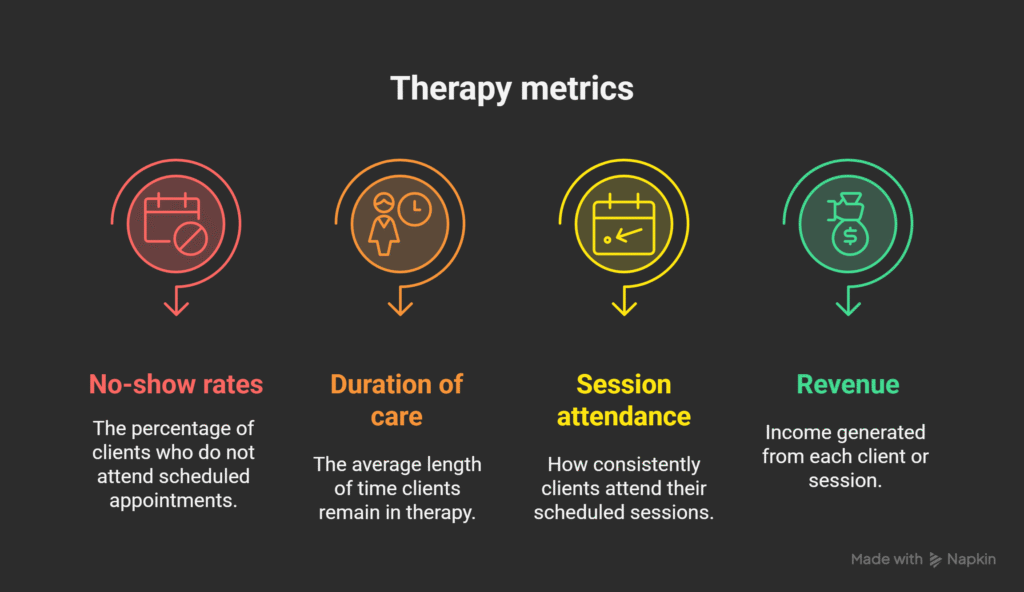In today’s fast-moving digital environment, therapy practices can’t afford to treat client management as an afterthought. Smooth workflows, secure data handling, intuitive communication, and consistent engagement are just as important as therapeutic outcomes. Whether you’re a solo practitioner or running a small group practice, how you manage clients directly impacts client satisfaction, compliance, retention, and your reputation.
Client management for therapy practices isn’t just about administration—it’s about nurturing trust, ensuring consistency, and creating a frictionless experience from first contact to long-term care.
1. Creating a Seamless Client Intake Process
First impressions shape trust. When a potential client reaches out, your intake process should be smooth, secure, and stress-free. Start by optimizing your website’s booking interface with a clear call-to-action (CTA) like “Book Your First Session” or “Request a Consultation.” Modern therapy websites now integrate secure forms where clients can share their contact details, preferred appointment times, and initial concerns.
Once a form is submitted, automated confirmation emails—personalized and warm—can welcome the client and explain what to expect next. You may include links to intake documents, consent forms, or a welcome video that explains your practice philosophy.

As outlined in the Complete Guide to Website Development for Therapists, your website should offer not just functionality but comfort. It’s your practice’s first emotional handshake.
2. Efficient Scheduling and Communication
Effective scheduling is a cornerstone of good client management. Relying on back-and-forth emails wastes time and increases the risk of no-shows. Instead, leverage online scheduling tools like Acuity, SimplePractice, or Calendly. These platforms sync with your calendar, prevent double bookings, and often offer HIPAA-compliant video integrations.
Equally important are appointment reminders. Automated reminders sent 48 and 24 hours in advance—via email or SMS—reduce missed appointments and reinforce professionalism. These small automations can boost attendance rates dramatically and give clients peace of mind.

If you’re offering teletherapy, secure video links should be embedded in these reminders. For support, see Teletherapy Website Features Every Therapist Needs, which outlines essential client-side functionality.
3. Centralizing Notes, Progress, and Admin with EHRs
Managing client information efficiently is essential—not just for compliance, but for better therapeutic outcomes. Modern Electronic Health Record (EHR) systems allow therapists to record session notes, treatment plans, and progress metrics in one centralized, secure platform.
EHRs also automate essential workflows such as:
- Tracking client attendance
- Flagging missing forms or signatures
- Sending payment reminders or digital invoices
- Uploading homework or post-session exercises

By integrating EHRs with intake forms and scheduling tools, you eliminate redundancy and ensure a seamless data flow. Learn how to select the right tool with the Complete EHR Guide for Therapy Practices.
With EHR platforms offering templates for SOAP notes, billing integration, and even outcome tracking, counselors can spend more time engaging clients—and less on admin.
4. Maintaining Strong Client Engagement Between Sessions
Therapy doesn’t stop when the session ends. Strong client management includes keeping clients engaged between appointments. You might send a quick recap email summarizing discussion points, exercises to complete, or even a wellness check-in message after a missed session.
This kind of proactive engagement helps clients feel supported, builds therapeutic momentum, and increases long-term retention. You can also send automated monthly wellness tips or event invitations using email marketing tools that comply with privacy standards.

If you’re building these sequences yourself, refer to Email Marketing Best Practices for Mental Health Professionals for guidance on tone, timing, and segmentation.
5. Improving Payment Processes and Financial Clarity
Billing is often the most uncomfortable part of client interactions. Yet a smooth payment experience is central to strong client management. Offer multiple payment methods (credit card, digital wallets, HSA/FSA), clearly state fees upfront, and avoid ambiguity.
Payment reminders should be automated and sent 24 hours before an appointment, with follow-up for overdue balances. If you accept insurance, offer to verify benefits early and use billing software that auto-generates superbills or insurance claims.
Practices that offer client portals allow for more autonomy—clients can view invoices, download session receipts, and track payments at their convenience.

For therapists who offer telehealth and want seamless payment integrations, check out Custom EHR for LMFTs, where similar systems apply to solo practitioners and group practices alike.
6. Personalizing Client Experiences to Build Retention
Therapists who personalize their approach beyond the therapy room often see higher client loyalty and satisfaction. Something as simple as remembering a client’s therapy anniversary or sending an encouraging message before a holiday can go a long way.
Additionally, consider setting up personalized aftercare plans for clients concluding therapy, along with ongoing check-ins to keep the door open for return sessions. When you systematize these personal touches, you increase engagement without overwhelming your day.

As Mental Health IT Solutions emphasizes in Marketing for Therapists – What Works in 2025, personalization and automation must coexist in today’s successful practice.
7. Using Data & Feedback to Optimize Client Management
The most effective therapy practices use real-time feedback and data to enhance service. Implementing digital client feedback forms can help you uncover gaps in service, miscommunication, or unmet expectations. These can be sent post-session or at key milestones in the client’s journey.
Analytics tools within your EHR or scheduling system can help you track:
- No-show rates
- Average duration of care
- Session attendance consistency
- Revenue per client or per session type

When you understand the full lifecycle of your clients—from inquiry to offboarding—you can optimize each touchpoint.
8. Addressing Common Challenges in Client Management
Even with great systems, issues arise. No-shows, incomplete paperwork, delayed payments, or disengaged clients can affect your day-to-day flow. These challenges can often be minimized with a few core strategies:
- For missed appointments: Use multi-touch reminder systems and establish a firm cancellation policy.
- For unreturned paperwork: Integrate auto-reminders into your onboarding workflow.
- For low client engagement: Send personalized wellness emails or offer re-engagement incentives like a free check-in.
- For administrative overload: Outsource billing or consider hiring a virtual assistant trained in HIPAA compliance.

For broader insight into improving digital infrastructure to support client management, Build a Strong Online Presence for Your Therapy Practice shares foundational tactics for counselors looking to scale.
Conclusion: Structure Enhances Support
In therapy, trust is the currency, and efficient client management builds that trust before the first session even begins. From automated scheduling and streamlined documentation to consistent client engagement and secure communications, effective client management allows you to provide a therapeutic experience that feels safe, professional, and attentive.
By using secure technology, adopting automation tools, and building processes that center your clients’ comfort and clarity, you’re not just making your practice run smoother—you’re making healing more accessible.
Looking to upgrade your client management systems? Browse smart solutions and therapy-focused tools at Mental Health IT Solutions.






